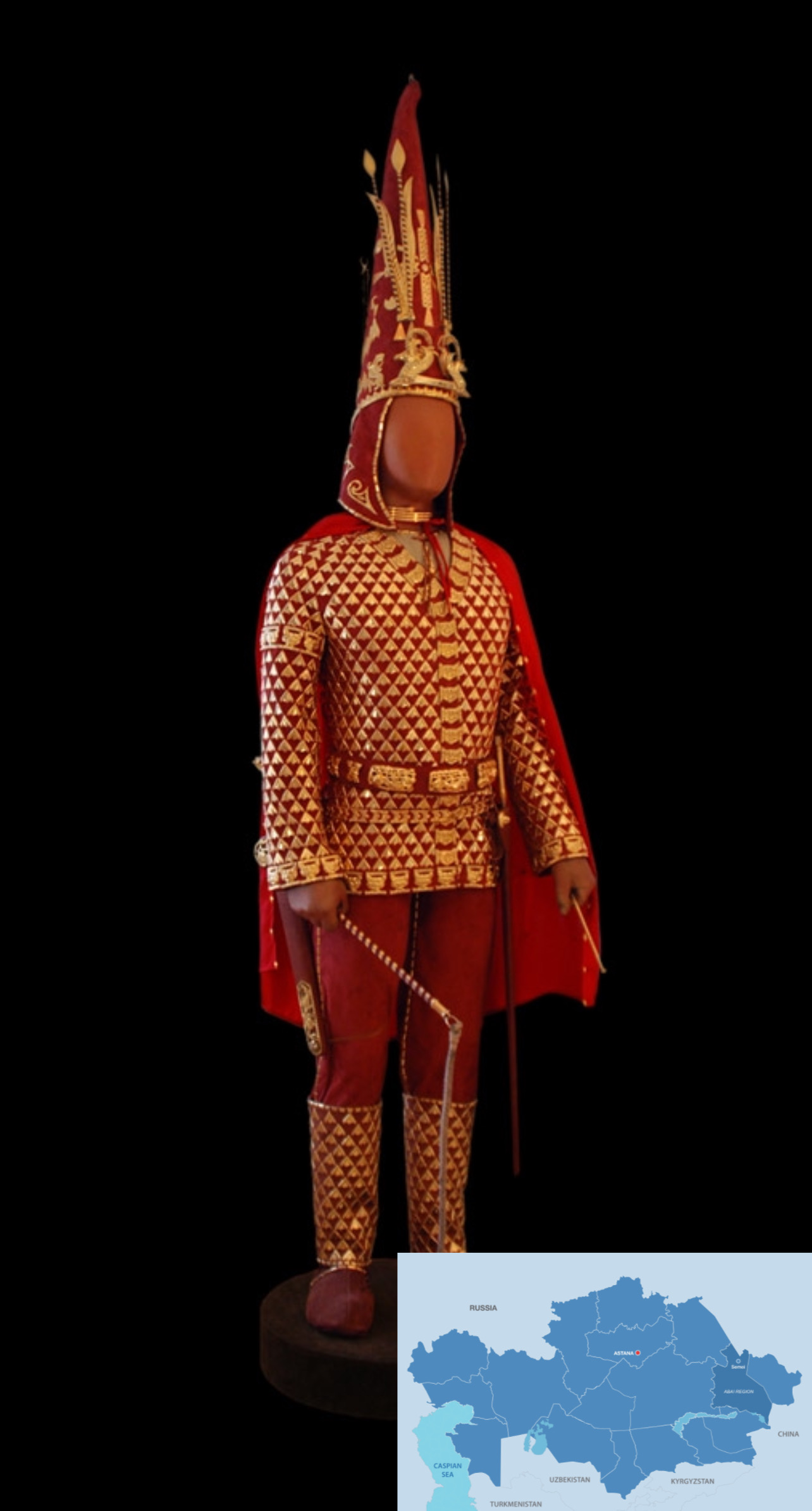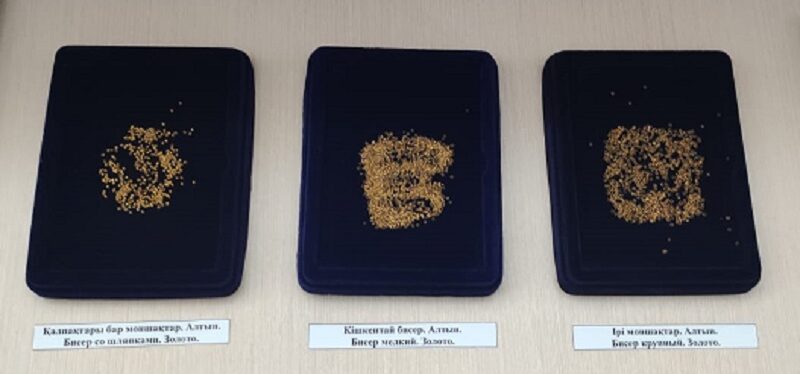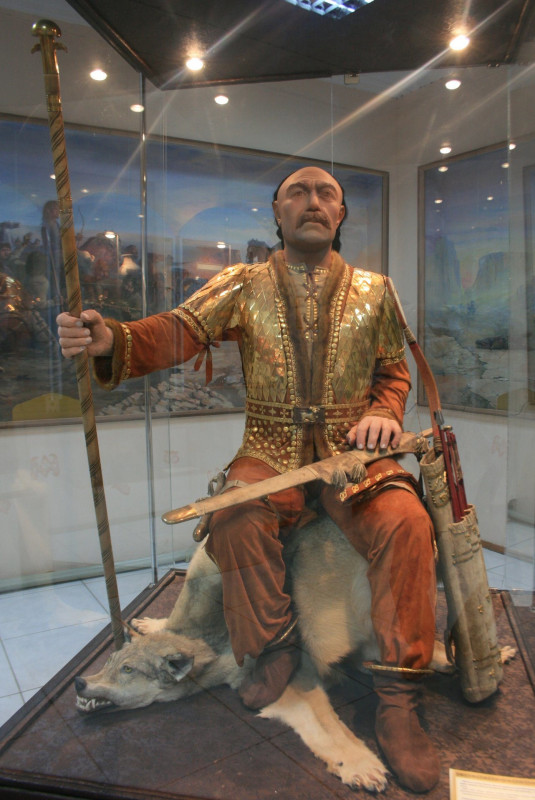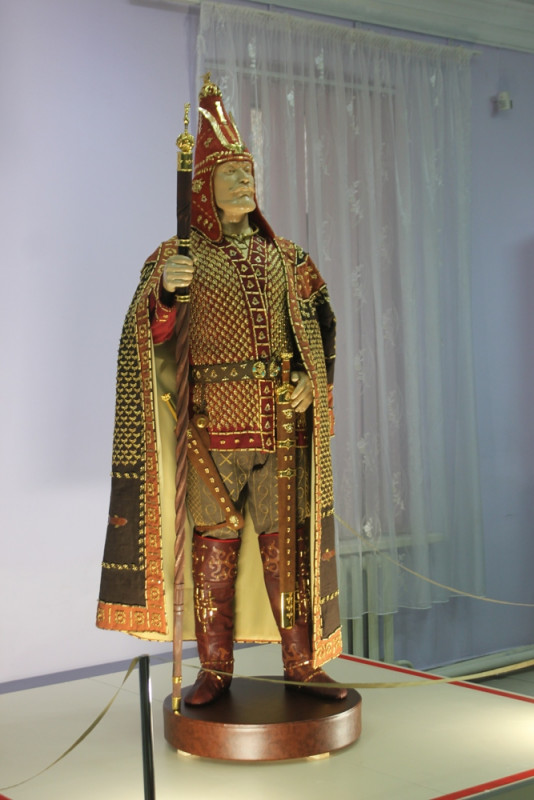ASTANA – Rare gold jewelry, remains of bird of prey, and 3,000 other items were found in the mounds in the Ayagoz district of the Abai Region at a depth of three meters, reported the Abai Region’s akimat (administration) on April 18.

Altyn Adam. Photo credit: kazakhworld.com. Click to see the map in full size. The map is designed by The Astana Times.
The discovered exhibits, which date back to the eighth and ninth centuries BC, were handed over to Semey’s regional museum of local history.
A group of archaeologists has been working in this region since 2021. They have explored monuments of the Bronze Age and the Early Iron Age, and have discovered nearly 100 archeological sites, including mounds, settlements, and rock carvings.
One of the leading scientists who conducted the study is a well-known archaeologist and candidate of historical sciences at the Al-Farabi Kazakh National University Gani Omarov.
According to Omarov, the discovered items are of great historical significance for the country because they allow people to learn about population migration, establish a link between Zhetysu, a region in south-eastern Kazakhstan, and eastern and central Kazakhstan, and see how people were resettled in central Kazakhstan via Bozai, Tarbagatai, and Chigistau.
“We excavated three mounds, one of which belonged to the aristocracy and stood around three meters tall. We discovered gold artifacts in this plundered mound, including gold beads and plates etched with animal images. Laboratory tests revealed that the golden artifacts are from the eighth to ninth centuries BC, implying that the earliest Saka burial mounds were exhumed,” he said.
Of the three types of beads, 3,000 units were found at a considerable depth of the burial mounds. Overall, archeologists collected nine bags of these beads and sent them to Almaty for further assessment. Earlier, archaeologists found similar ancient brooches with decorative animal images in eastern and central Kazakhstan.

Gold beads. Photo credit: inform.kz.
“The Ayagoz Region is an important place for research. In 1862, Vasily Radlov visited this place on a scientific mission for the first time. During our excavation, we discovered several tumuli with ridges that belong to Tasmolin culture and several settlements of the Early Iron Age,” said Omarov.
The first Golden Man was discovered in 1969 by Kemal Akishev, a Kazakh archaeologist who conducted excavations near Almaty. He found the grave of a young (17-18 years old) Saka king in the Issyk kurgan dressed in an attire covered with nearly 4,800 gold items.

The Sarmatian leader. Photo credit: tengrinews.kz.
The crown of the Golden Man was decorated with four arrows, which mean the four cardinal points and are a sign of a ruler. Winged horses with large goat horns are considered a symbol of the fusion of the images of the solar deity and the tribal totem, while wings mean a symbol of supreme power. The warrior’s costume was made of red suede, where the color symbolized militancy.
The Sarmatian leader, another Golden Man, was found in 1999 by Zainulla Samashev in the Araltobe mound of the Atyrau Region. The remains of a man, a woman, two horses, and a dog relate to the second century BC. The archaeologists also found a sword, an anlace, arrowheads, a gilded iron rod, and approximately 400 gold elements – sewn-on plaques of round, framed, diamond-shaped, and serpentine shapes. All these ritual burial attributes testify to the noble origin of people.
The Shilikta Golden Man was another representative of ancient Kazakhstan. A burial dating from the eighth century BC was discovered in 2004 in the Baigetobe Shilikta mound by Abdesh Toleubaev. Approximately 4,300 gold items were found inside the tomb, including unique gold plaques in golden argali stylized as eagles, bears, and leopards. The archaeologists also found a five-pointed, lazuli-incrusted star symbolizing power and distinguished birth.
In 2010, an expedition by Arman Beisenov completed excavations of the Taldy 2 burial ground in the Karagandy Region. They explored seven Saka royal burial mounds of the Tasmolin culture of the Early Iron Age.

The Shilikta Golden Man. Photo credit: tengrinews.kz.
They found over 200 large gold items in the famous Saka animal style and approximately 34,000 small ones, even though the mounds were repeatedly raided. Such wealth suggests that leaders and rulers of the Saks were buried there. Detailed inlaid clothing also characterizes the ceremonial costumes of the Saka kings.
In addition to archaeologists finding the remains of noblemen in Saka burials, there are also discoveries of female burials.
The Golden Woman burial was discovered in 2012 at the Taksay 1 complex in western Kazakhstan. The tomb dates back to the Sarmatian period. Archaeologists found 80 gold ornaments, including plaques decorated with heads of rams and griffins’ images, gold bracelets, beads, and amulets made of wolf teeth in a gold frame, which were sewn on the sleeves of the dress. An unusual comb depicting the battle scenes between Sarmatians and Persians is considered a unique artifact.
The Eleke Sazy mound in eastern Kazakhstan presented another discovery of a noble young man whose remains date back to the eighth or seventh century BC. According to anthropologists, his height was approximately 165-170 centimeters, and he was 17-18 years old.
An untouched monument of the early Saka period with perfectly preserved artifacts makes this burial especially unique. The archaeologists discovered clothing embroidered from head to toe with gold beads, a quiver, an anlace in a gold box, and a thin hoop akin to a bracelet placed around the man’s neck, which has always been a sign of distinction and an indicator of high social position.

